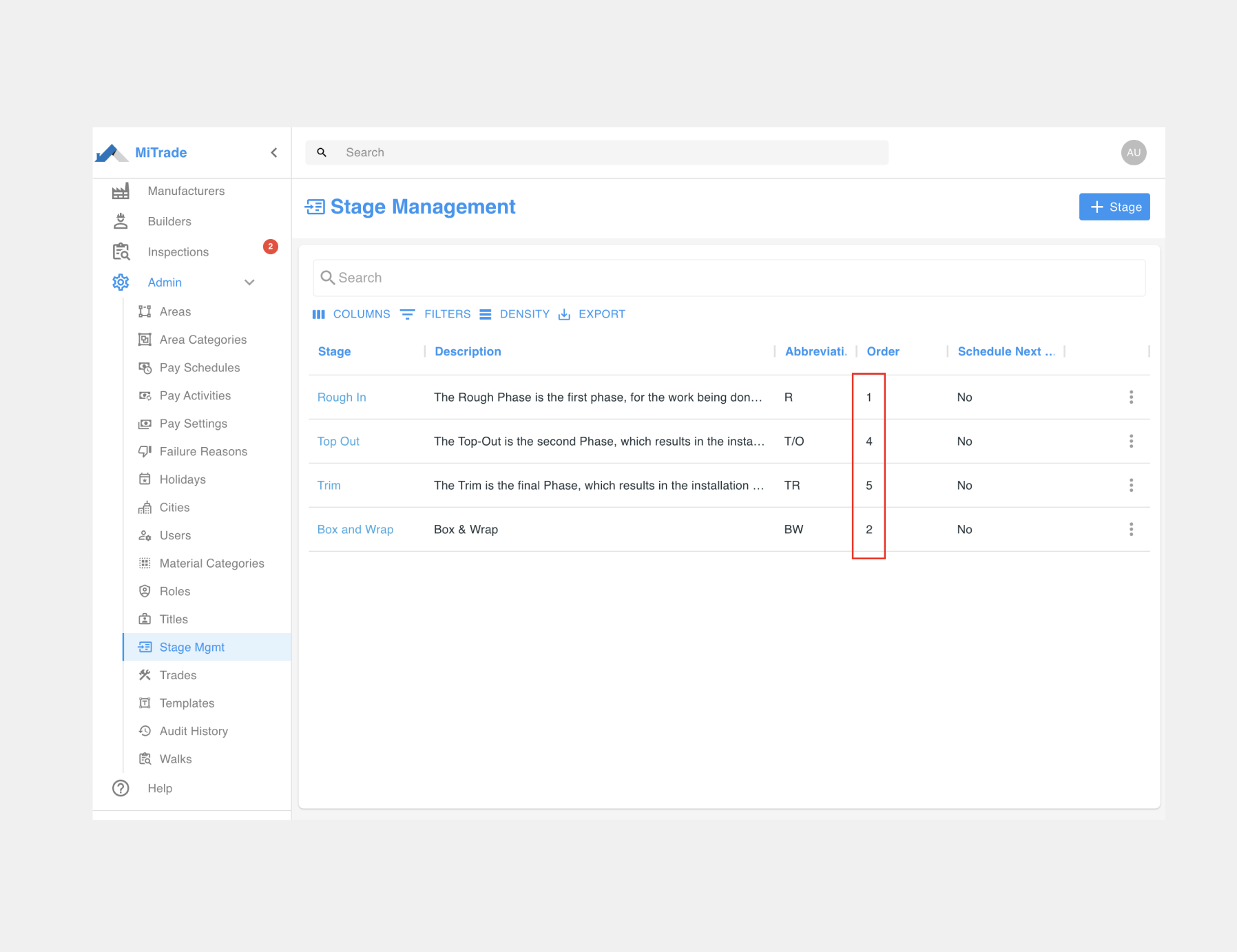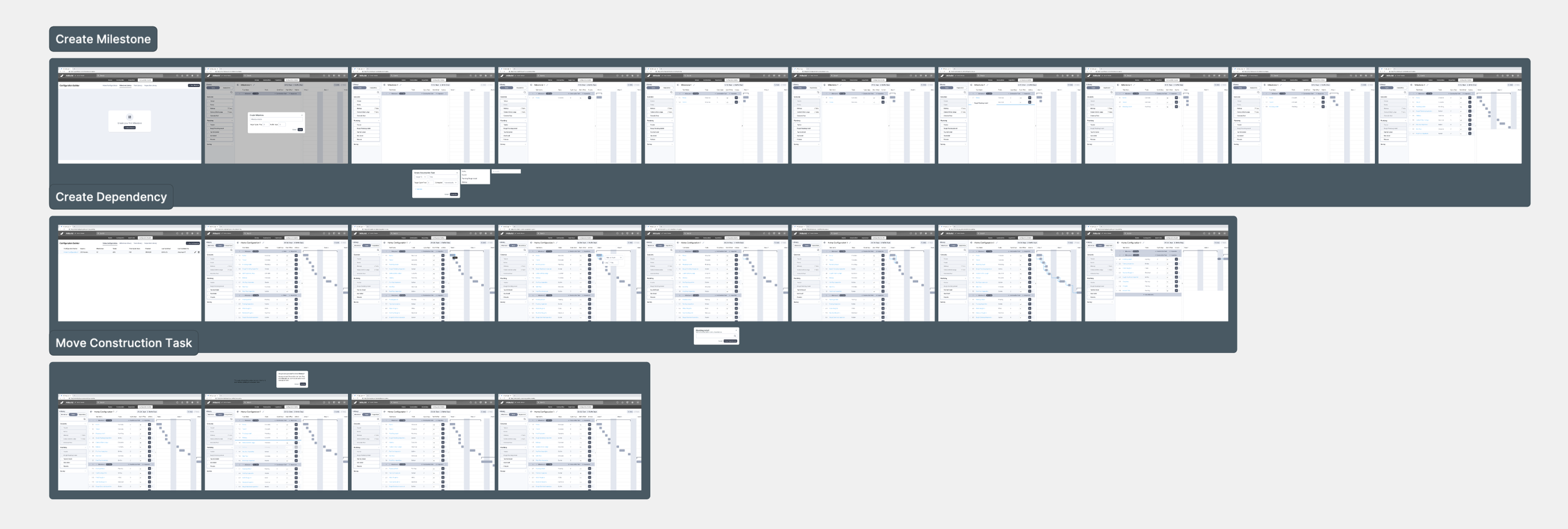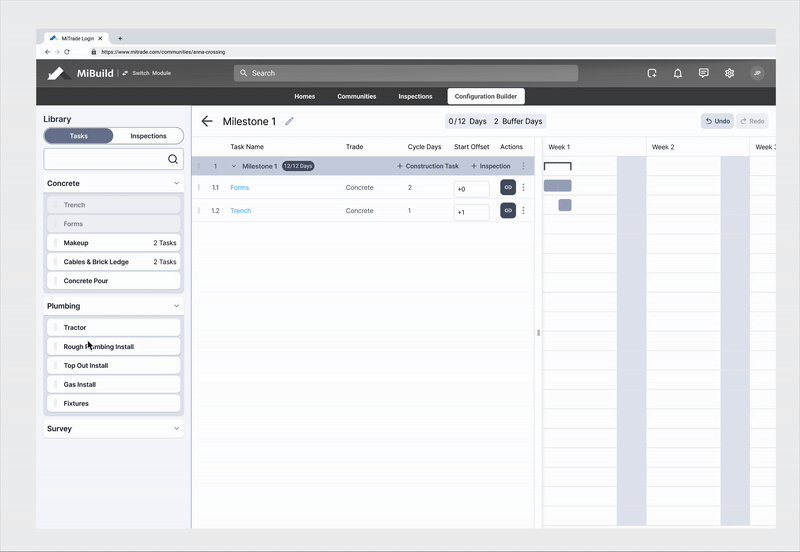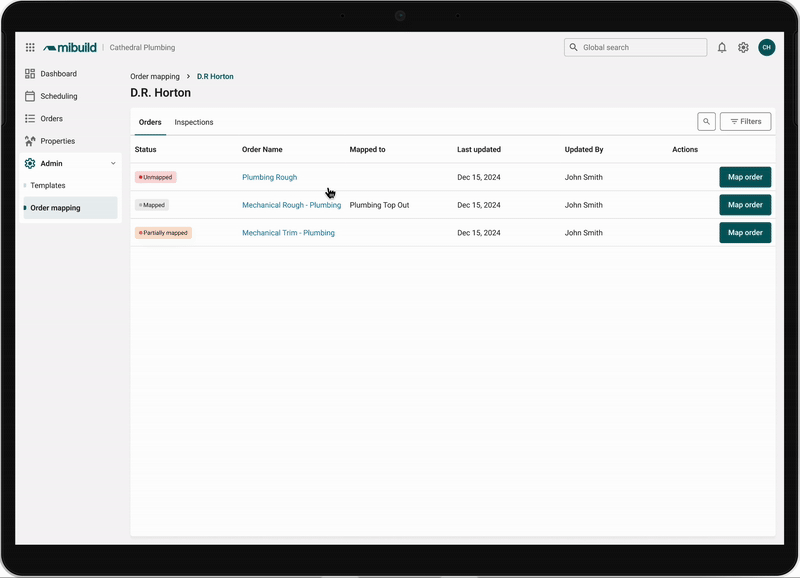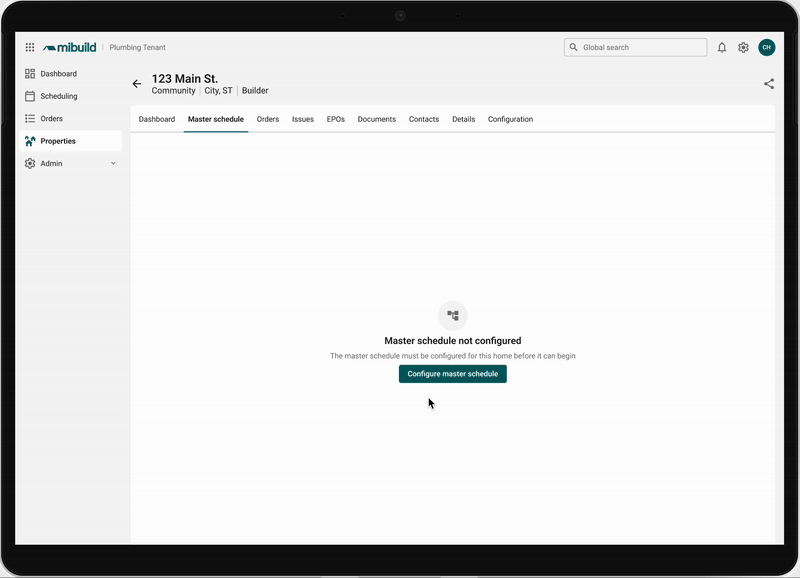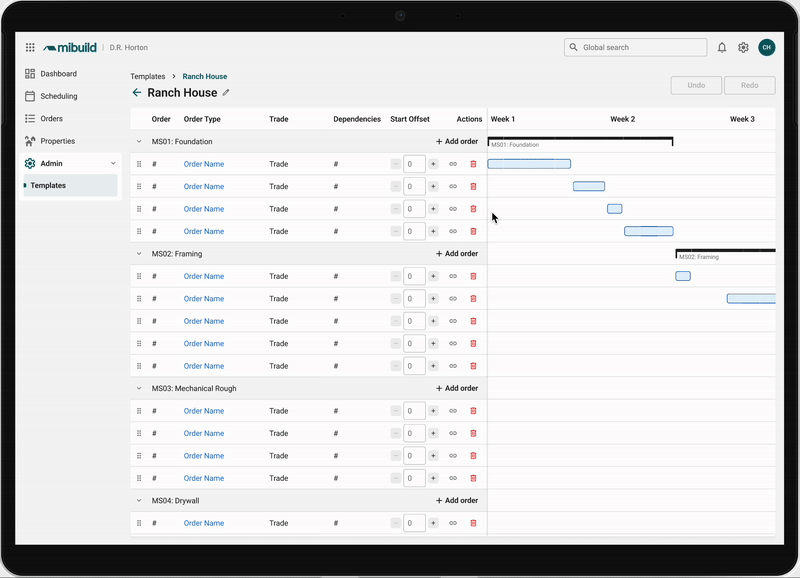MiView: Build Template
ROLE
Senior Product Designer
TEAM
1 Product Owner
1 Team Lead
4 Engineers
SUMMARY
I led the design effort to reimagine how builders and trades create and manage construction schedules. The legacy system lacked sufficient structure, logic, and scalability our users needed. I researched construction workflows, collaborated with engineering, and advocated for an enhancement on the existing system.
THE PROBLEM
The current scheduling tool, a basic list of orders, doesn’t reflect how builders and trades plan work. Without support for milestones, task dependencies, or cross-job coordination, teams often arrive at job sites before prerequisite work is done. This leads to frequent “dry runs” and a high support burden.
ADDITIONAL COMPLEXITY
Existing architecture surrounding managing construction workflows did not support a builder’s milestone needs, as well as having insufficient flexibility to create dependencies for work across tenants.
STEP 1: RESEARCH & DISCOVERY
UNDERSTANDING ARCHITECTURE
I collaborated with the development team to understand how the current architecture supports the desired build template feature and identified critical gaps, ultimately concluding that rearchitecting portions of the application was necessary to meet this high-priority business need.
COMPETITIVE ANALYSIS
I conducted a competitive analysis of industry leaders like Hyphen Solutions and ServiceTitan, identifying a key opportunity to differentiate by offering a cross-tenant master schedule. This is an unmet need. I also drew insights from platforms like Monday.com and Microsoft Planner to recommend added flexibility features such as support for dependencies between workstreams.
*Flows for each process were created, slight variations exist between a builder tenant and a trade tenant.PHASED APPROACH
To align with our roadmap and delivery timeline, we agreed on a phased approach:
Phase 1: Enables tenants to create order templates and build templates with dependencies.
Phase 2: Cross-tenant order mapping was deferred to phase 2 due to privacy and security considerations, pending further research by development and legal teams.
STEP 2: IN DESIGN
MID-FI WIREFRAMES
Throughout the design process, we prioritized Phase 1 delivery features while keeping Phase 2 requirements in mind. By documenting how future phases would build on the initial release, we ensured the development team clearly understood our full vision and could plan accordingly.
FEASIBILITY
During the design process I often met with development to ensure what is being designed is feasible. One feature requested by business was ultimately deemed unfeasible.
Drag & Drop
Given our delivery constraints and choice of library, drag and drop within the build template would have complicated the implementation risking our delivery timeline.
STEP 3: HI-FI PROTOTYPES
Cross tenant order mapping
This showcases the connection between the trade and the builder. The trade may have its own complex workflow built within a given order.
This feature was brought to our attention by business as it allows trades to pass status and information to the builder which previously was not possible.
Adding a build template to a home
By adding a build template to a home it allows the builder or trade to have all orders automatically placed onto a tentative schedule.
This was a must have feature request from our users as it prevents unnecessary duplicative work configuring each home where >90% of orders will remain the same.
Creating an order dependency from build template
As part of the requirement to create dependencies between orders, we allowed this to be done during the build template creation. These dependencies will carry over into the master schedule when the template has been associated to a home.
STEP 4: HANDOFF
DOCUMENTATION
As part of handoff, I took the time to outline the intended functionality. Even though we have our product partners to aid in communicating the intent behind our designs. It was important to me to ensure no stone is left unturned. This acted as a source of truth to be referenced within the design file.
CONCLUSION
OUTCOME
Phase 1 on our delivery plan is nearing completion, with phase 2 shortly following (Apr. 2025). During our release internally to our partner trade we will continue to test and improve the product before we release this feature to all tenants.
LEARNINGS
Complex workflow systems are a fun way to flex the brain. A methodical approach to ensure the product is delivered as intended aids in a seamless delivery.

